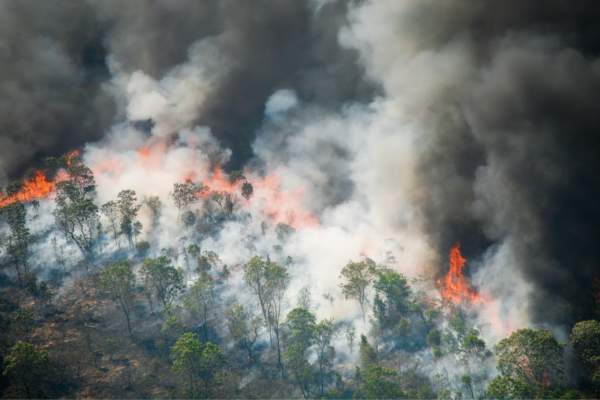Check out the latest news articles, research and progress to tackle air pollution around the world.
Air pollution still the greatest external risk to human health
The Energy Policy Institute at the University of Chicago has released its Air Quality Life Index (AQLI) 2025 report, confirming that air pollution remains the world’s greatest external threat to human health. The findings show that if fine particulate pollution were permanently reduced to meet World Health Organization (WHO) guidelines, the average person would gain 1.9 years of life expectancy—equivalent to a collective 15.1 billion life-years worldwide.
The report also highlights regional trends. Most striking: in 2023, the United States and Canada recorded the world’s largest increase in particulate pollution, fueled by the most severe wildfire season in North American history.
Understanding the true impact of wildfire smoke
A new study from the Barcelona Institute for Global Health (ISGlobal) found that deaths in Europe from short-term exposure to wildfire particulate matter (PM2.5) were underestimated by a shocking 93%. The standard assumption is that wildfire PM2.5 is similarly deadly as that from other sources, like transport. If that were true, around 38 deaths would occur on average per year, but there were actually 535 on average per year (between 2004-22).
Beyond human health, wildfire smoke has also been found to significantly increase levels of tropospheric ozone, one of the super pollutants driving half of global warming. Researchers from the University of Utah Atmospheric Sciences reported the smoke can cause a 20-30% spike in ozone levels – even in remote areas far from urban pollution sources.
European cities tackle heatwave-related pollution
Heatwaves can increase levels of tropospheric ozone, adding a greater burden to existing public health risks. European cities have responded to this challenge by adopting measures to quickly cut emissions and protect residents’ health. In Geneva, this included free public transport, cars restrictions, lower speed limits, and more support for older people. In Paris, lorry bans, industrial shutdowns and speed cuts helped bring air pollution levels down. These actions demonstrate how targeted clean air measures can both protect human health and mitigate environmental harm.
UN calls for urgent action this #WorldCleanAirDay
Ahead of International Day of Clean Air for Blue Skies (7 September), UN Secretary-General António Guterres has urged governments to take bold, immediate action to cut air pollution. He points out countries updating their Nationally Determined Contributions (NDCs) ahead of COP30 have a crucial opportunity to reduce emissions and transition away from polluting fossil fuels.
Global South worst hit by pollution from plastic burning
In many communities across the Global South, burning plastic for cooking, heating or waste disposal has become commonplace. This practice releases toxic pollutants into the air, causing serious harm to both residents’ health and the environment. With much of the waste originating from high-income countries, researchers stress the need for stronger international accountability and clean alternatives to tackle this environmental equity challenge.
Communicating air quality effectively
Air Quality Indexes (AQI) simplify complex data but vary globally. Actual pollutant concentration measurements are harder to understand without specialist knowledge, but can provide more tailored insights on how different pollutants are affecting human and environmental health. Monitoring specialist Jim Mills suggests the best way to communicate about air pollution to the public is a hybrid approach leveraging the strength of each approach – improving awareness and supporting people to take protective action.
Meet the UK nurses leading clean air action
Last year, the Royal College of Paediatrics and Child Health (RCPCH) reported that air pollution is the second-leading risk factor for death in children younger than five worldwide. Frustrated with simply managing the health effects of dirty air on their communities, a group of nurses in the UK are working to tackle its root causes, through groundbreaking clean air clinics, education-based work and nurse-led housing interventions.
Black carbon fuels child asthma hospitalisations
In Thailand, short-term exposure to black carbon is driving a marked increase in child asthma hospitalisations – especially among those younger than 15. The findings underscore the urgent need for clean air measures to cut emissions and protect children, who are particularly vulnerable to the health impacts of air pollution.


